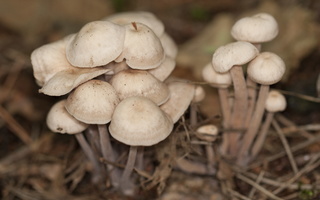- sort orderDefault
Photo title, A → Z
Photo title, Z → A
✔ Date created, new → old
Date created, old → new
Date posted, new → old
Date posted, old → new
Visits, high → low
Random - Google Map
- map
 home / Fungi · grybai / Omphalotaceae · alyvbudiniai / Collybiopsis confluens · šiurkščiakotė plempenė
home / Fungi · grybai / Omphalotaceae · alyvbudiniai / Collybiopsis confluens · šiurkščiakotė plempenė

-
 Collybiopsis confluens · šiurkščiakotė plempenė
Collybiopsis confluens · šiurkščiakotė plempenė
-
 Collybiopsis confluens · šiurkščiakotė plempenė
Collybiopsis confluens · šiurkščiakotė plempenė
-
 Collybiopsis confluens · šiurkščiakotė plempenė
Collybiopsis confluens · šiurkščiakotė plempenė
Collybiopsis confluens · šiurkščiakotė plempenė
- Marasmiellus confluens, Gymnopus confluens, Collybia confluens
- clustered toughshank
- Knopfstieliger Rübling
- šiurkščiakotė plempenė, šiurkščiakotė plempė, šiurkščiakotis plempis
- kopaugošā vērdiņsēne
- łysostopek pozrastany
The Clustered Toughshank occurs in most temperate countries on mainland Europe and in Asia. This species is also found in many parts of North America. The densely packed clusters and upright stems of this little woodland mushroom immediately distinguish it from other, larger toughshanks. Particularly under deciduous hardwood trees but also occasionally in conifer forests, crowds of these pale caps jostle with one another and often form impressive fairy rings. Although they may appear to be sprouting from the forest floor or in grass at woodland edges, there is often buried rotten wood just below the surface. The cap flesh is so thin and insubstantial and the stems so tough that Clustered Toughshanks are not worth considering as a culinary collectible.
Auga liepos - spalio mėnesiais, spygliuočių, lapuočių ir mišriuose miškuose. Auga grupėmis, dažnai vaisiakūniai sulipę kupstais po keliolika ar net keliasdešimt. Mėgsta žolėtas vietas, brūzgynus. Kepurėlė 1–5 cm skersmens, plona, tampri, gelsvai rusvos spalvos, varpelio formos, krašteliai paprastai šviesesni. Lakšteliai labai siauri, tankūs, gelsvi, balsvi, priaugtiniai. Kotas 5–10 cm ilgio ir 0,3–0,6 cm storio, kremzliškas, cilindriškas, pasišerpetojęs, aplipęs smulkutėmis karpelėmis, pilkšvas, senesnių tamsėja, gali būti tamsiai rudas su rausvu atspalviu. Nevalgomas grybas.